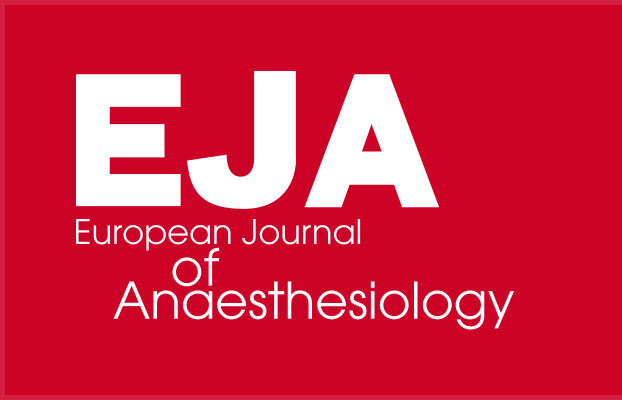Newsletter 2025
Honouring the women who shaped Anaesthesia, Intensive Care, and Emergency Medicine – and the role of ESAIC in advancing equity
Following International Women’s Day, it is important not only to celebrate but to truly appreciate the profound impact that women have had—and continue to have—on anaesthesia, intensive care, and emergency medicine. Their contributions are not simply moments in history but enduring testaments to resilience, ingenuity, and leadership, shaping the way we approach patient care today and for future generations.

Breaking Barriers and Transforming Care
Imagine a time when women in medicine were met with scepticism, their expertise questioned, their contributions often overlooked. Yet, despite these barriers, women like Dr Virginia Apgar emerged as forces of change. Her pioneering Apgar Score, developed in 1952, provided a simple but groundbreaking method to assess newborns’ health, saving countless lives. Her work introduced science and structure into neonatal care—areas once dominated by instinct and improvisation.
Even earlier, Dr Rupa Bai Furdoonji was among the first female anaesthetists, stepping into operating theatres at a time when few women were given the opportunity. Her expertise helped prove that women were not only capable but also essential in the evolution of anaesthesia.
Professor Judith Hall, a contemporary medical trailblazer, has advanced anaesthesia globally. Her work through the Phoenix Project in Namibia and Mothers of Africa charity has tackled maternal mortality and improved healthcare systems in underprivileged regions (Hall, 2019). She embodies a new generation of pioneers—those who transform not only clinical care but also communities.
A Legacy of Leadership and Advocacy
Leadership in medicine is about more than expertise—it is about advocacy and lasting change. Dr Alice Coombs, a highly respected anaesthetist and intensivist, has spent over three decades pushing for healthcare reforms. As the first Black woman to serve as President of the Medical Society of Virginia, she has been a leading voice in addressing healthcare inequities.
In paediatric anaesthesia, Dr Linda J. Mason has been a guiding figure. Her work has shaped how anaesthetists approach care for the most vulnerable. Similarly, Dr Sheila Cohen’s contributions to obstetric anaesthesia have advanced safe pain management in childbirth, improving maternal outcomes.
Julia Gordon Arrowood helped shape the profession in the 20th century, paving the way for generations of female anaesthesiologists. Her legacy in clinical education and patient safety remains relevant to this day.
Driving Patient Safety and Innovation within ESAIC
In Europe, the European Society of Anaesthesiology and Intensive Care (ESAIC) has become an increasingly vocal advocate for gender equity and diversity in the specialty. One of the most notable figures in this context was Dr Jannicke Melli Olsen, a trailblazer for patient safety and perioperative care. Deeply involved in ESAIC, she chaired the Patient Safety and Quality Committee and was the driving force behind the Helsinki Declaration on Patient Safety in Anaesthesiology – now a global benchmark. As ESAIC Secretary, she strengthened education and policy frameworks and extended her leadership internationally through the WFSA. In recognition of her lasting impact, ESAIC awarded her Honorary Membership in 2018 and named her a Fellow of FESAIC.
In a 2024 ESAIC feature titled “Women in Anaesthesia: Is the Future Bright?“, the Society highlighted ongoing efforts to close gender gaps in leadership, academia, and clinical advancement. The ESAIC continues to spearhead initiatives to support women across all stages of their careers through mentorship, fellowships, and advocacy for structural change. From challenging unconscious bias to improving work-life integration, ESAIC is actively working to create an environment where the next generation of women leaders can thrive.
A shared responsibility: Empowering the Future
While the contributions of these pioneering women have been transformative, challenges persist. Disparities in leadership representation, access to research funding, and recognition remain real barriers for many women in anaesthesia, intensive care, and emergency medicine. ESAIC acknowledges this and is taking a proactive stance to address systemic issues by building platforms, supporting role models, and fostering inclusive dialogue across the profession.
Change is happening, and the next generation is already making its mark. As a professional community, it is our responsibility to actively support and empower the future. By continuing to challenge biases, advocate for equal opportunities, and celebrate excellence regardless of gender, we ensure that medicine remains a field led by competence, compassion, and courage.
References
- Apgar, V. (1953). A proposal for a new method of evaluation of the newborn infant. Current Researches in Anesthesia & Analgesia, 32(4), 260-267.
- Desai, S. P. (2017). Rupa Bai Furdoonji – The world’s first woman anaesthetist. Indian Journal of Anaesthesia, 61(3), 267–268.
- Hall, J. (2019). The Phoenix Project and Mothers of Africa: A personal perspective. Anaesthesia News, Association of Anaesthetists.
- Coombs, A. (2018). Leadership, policy, and diversity in anaesthesia: The journey continues. Medical Society of Virginia Journal.
- Mason, L. J. (2021). Reflections on a career in paediatric anaesthesia. American Society of Anesthesiologists Newsletter.
- Cohen, S. (2005). Improving outcomes in obstetric anaesthesia. British Journal of Anaesthesia, 95(5), 613–616.
- Calmes, S. H. (2000). Julia Gordon Arrowood and the early days of women in anaesthesiology. ASA Newsletter Archives.
- ESAIC (2018). Jannicke Melli Olsen awarded ESAIC Honorary Membership. Retrieved from https://esaic.org
- ESAIC (2024). Women in Anaesthesia: Is the Future Bright?. Retrieved from: https://esaic.org/women-in-anaesthesia-is-the-future-bright/
Author
- Arta Leci
- Marie-Hélène Lattes









